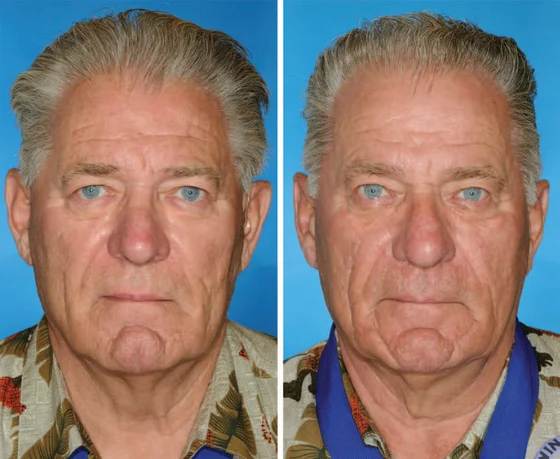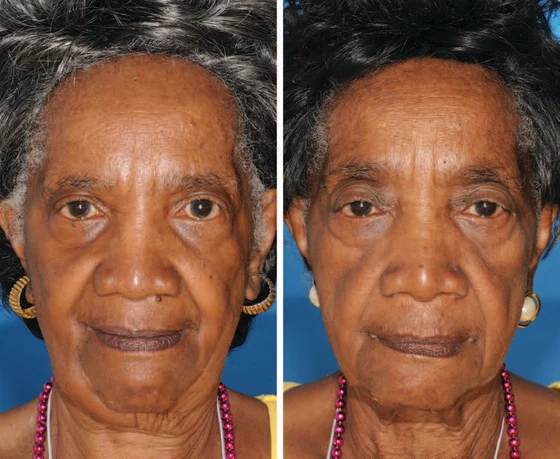As a skincare consultant, I often tell my patients that smoking is one of the skin’s worst enemies. It’s not just about wrinkles—we’re talking dullness, inflammation, and even an increased risk of skin cancer. Your skin is your body’s first line of defense, and smoking floods it with harmful toxins. Of course, quitting is the best solution for your skin and your overall health. But quitting is tough, I get it. So, whether you’re a smoker or often find yourself around secondhand smoke, here’s a protective routine designed to minimize the damage.
Direct smoking’s effects on the skin
Exposure to toxins from cigarette smoking has been associated with a range of dermatological issues. After all, evidence suggests that there are nearly 4,000 chemicals in cigarettes. Since your skin is your first barrier of defense, it takes the brunt of this toxic cloud every time you’re exposed.
So, how does smoking affect your skin health?
Accelerate skin aging
According to a study published in Advances In Dermatology And Allergology, smoking mainly affects the skin by speeding up the aging process. This is due to the fact that smoking is one of the major factors that damage collagen and elastin fibers, two pivotal proteins that are responsible for maintaining the skin’s elasticity and strength. The study concluded smokers are more prone to developing wrinkles and sagging skin, especially those with more than 40 packs smoked per year.[1]
Increase free radicals
Moreover, smoking generates free radicals—unstable molecules that weaken the DNA and affect every cell and tissue in your body. Precisely, it was found that tobacco smoke produces between 10 to 16 free radicals per puff, which over time, can lead to premature wrinkles and poor ability of the skin to repair itself and build proteins such as collagen.[2]
Decrease blood flow to the skin
Smoking also causes the narrowing of blood vessels, which limits the amount of oxygen and nutrients that can reach the skin. This leads to a dull, lackluster complexion and can even contribute to the formation of dark circles and under-eye bags. This is the reason long-time smokers frequently notice that they have more discolorations and hyperpigmentation on their faces and hands—notably, the areas most exposed to cigarette smoke.
Trigger inflammations and acne breakouts
It was found that smoking triggers an inflammatory response in the body, which can exacerbate skin conditions such as psoriasis and acne.[2] As a matter of fact, researchers confirmed acne is more frequent among smokers.[3] This is because smokers have a higher rate of sebum production compared to non-smokers, which often leads to an excess that clogs the pores and forms blackheads. This increase in sebum is believed to be caused by several factors, including the effects of nicotine on the body’s hormonal balance. Also, because smoking affects how quickly wounds heal, people with acne might find that it takes longer for spots and blemishes to go away.
Smoker’s lines or smile lines
Direct smoking is also the main reason people develop wrinkles around the mouth, often referred to as “smoker’s lines” or “smile lines.” These wrinkles usually appear as vertical lines or creases that radiate outward from the skin around the mouth and are caused by the repetitive puckering of the lips. This puckering action can cause the skin to crease and fold, eventually developing permanent fine lines. Smoker and smile lines are usually addressed with skincare products and injectable fillers, such as Juvederm.
Secondhand smoking effects on the skin
When someone is exposed to secondhand smoke, they inhale the same toxic chemicals and carcinogens as a direct smoker. These chemicals can damage the skin by decreasing blood flow, reducing collagen and elastin production, and increasing inflammation. So avoid areas with public smoking as much as possible. If you can’t, ensure there is plenty of ventilation. Open windows, use fans or air conditioning or move to an outdoor space.
Ok, most of you are probably aware that secondhand smoking affects the skin almost as much as firsthand smoking, but here’s something that you probably don’t know: thirdhand smoking is bad too, which is basically inhaling the tobacco smoke residue that lingers in the environment long after the cigarette or other tobacco product has been extinguished.
According to studies, the nicotine in the air and clothing can penetrate the skin and enter the bloodstream at levels equivalent to inhalation of secondhand smoke. This may cause adverse effects such as delayed wound healing and increased infections.
How long does it take for smoking to affect skin health?
Smoking can start affecting your skin health within a few weeks. The chemicals in cigarette smoke reduce the levels of collagen and elastin almost instantly, which can lead to the formation of wrinkles and fine lines. The longer you smoke, the more significant the impact will be.
Facial aging in smokers vs. non-smokers
A study on 79 identical twin pairs found that smoking can accelerate aging in specific areas of the face, including drooping upper eyelids, sagging lower eyelids, and wrinkles around the mouth and jowls. The study, published in Plastic and Reconstructive Surgery, compared the faces of twins where one twin had been smoking for at least five years longer than the other.[4]


How to recover and protect your skin
Use nicotine replacement therapy
To effectively address skin issues related to smoking, the best treatment is to cut down or completely quit smoking. Nicotine replacement therapy (NRT) products can aid in reducing cravings and managing withdrawal symptoms while also preventing further skin damage.
Nicotine pouches are an example of popular NRTs. Prilla’s guide to ZYN nicotine pouches notes how these small and discreet products are made with high-quality ingredients and undergo rigorous testing to ensure they are safe to use. Tuck one between your gum and lip and keep it there for 5 to 30 minutes, depending on your preferred intensity. They’re tobacco- and smoke-free, so you don’t have to worry about it causing stained skin and teeth or nutrient deficiencies that accelerate aging.
Nicotine lozenges are another oral NRT product that can help control cravings. Simply place them between the gum and cheek and keep them there for 30 minutes until they dissolve. Research on Nature featuring Nicorette lozenges even found that these can increase the success of smoking cessation by up to 60%.[5] With lozenges, you don’t need to pursue your lips as you would with cigarettes, so there are little to no chances of you developing smoker’s lines around the month.
Follow a preventative skincare routine
Quitting smoking altogether is the best course of action, but you can also adopt a preventative skincare routine that includes antioxidants. These ingredients can help neutralize the harmful free radicals produced by smoking and protect your skin from further damage.
During the day, apply a vitamin C serum and a lightweight moisturizer to consolidate your skin’s antioxidant defense and boost hydration. At night, use reparative creams with ceramides to restore your skin barrier and retinol serums to promote cell turnover and collagen production.
This simple yet effective routine will not only provide protection but also help reverse the effects of smoking on the skin by replenishing protein levels and encouraging the cells’ natural renewing process.
Furthermore, slough off dead skin with a gentle exfoliator once or twice weekly to keep your complexion smooth. To get rid of the smoker’s line, use intensive hydrating treatments, like silicone pads and hyaluronic acid creams, which plump the look of fine lines around the month.
Remember to use gentle products that are fragrance- and alcohol-free and apply sunscreen every day. Depending on where you live and your daily sun exposure, you may need sunscreen with an SPF of at least 30.
Footnotes
Women’s Concepts uses reliable sources, including dermatologists’ insights, clinical trials, and scientific journals, to find accurate information and support all the facts shared in our articles. All statements and claims have clear and legit references. Read our editorial policy to learn more about our sources of information, our process of researching and fact-checking the content, and how our team strives to keep all articles updated, completed, and trustworthy.
- Lipa K, Zając N, Owczarek W, Ciechanowicz P, Szymaǹska E, Walecka I. Does smoking affect your skin? Postepy Dermatol Alergol. 2021 Jun.
- West Virginia University. “Exposure to pollutants, increased free-radical damage speeds up aging.”
- Capitanio B, Sinagra JL, Ottaviani M, Bordignon V, Amantea A, Picardo M. Acne and smoking. Dermatoendocrinol. 2009.
- Okada HC, Alleyne B, Varghai K, Kinder K, Guyuron B. Facial changes caused by smoking: a comparison between smoking and nonsmoking identical twins. Plast Reconstr Surg. 2013.
- Azzopardi, D., Ebajemito, J., McEwan, M. et al. A randomised study to assess the nicotine pharmacokinetics of an oral nicotine pouch and two nicotine replacement therapy products.


